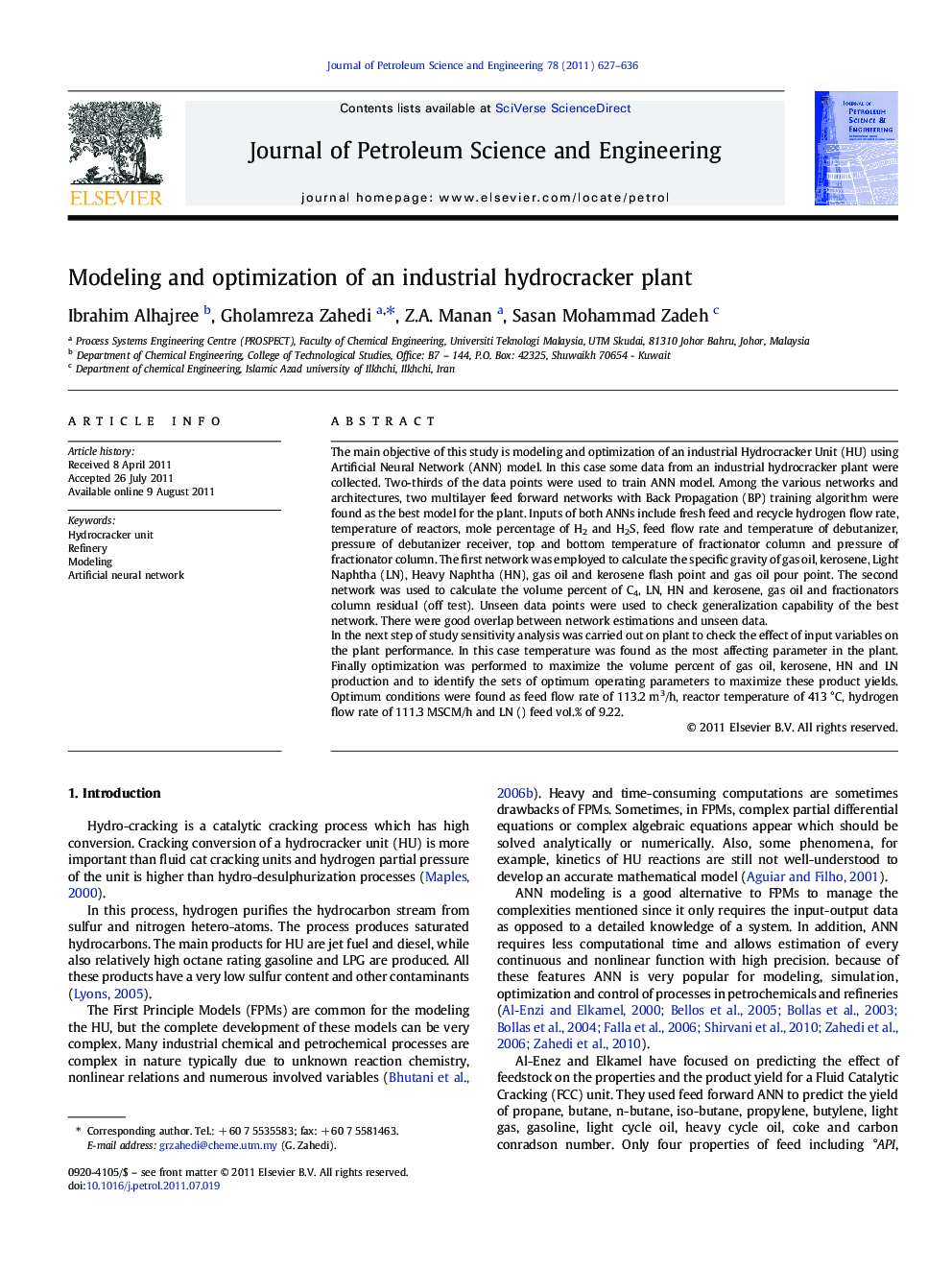| کد مقاله | کد نشریه | سال انتشار | مقاله انگلیسی | نسخه تمام متن |
|---|---|---|---|---|
| 1755671 | 1522855 | 2011 | 10 صفحه PDF | دانلود رایگان |

The main objective of this study is modeling and optimization of an industrial Hydrocracker Unit (HU) using Artificial Neural Network (ANN) model. In this case some data from an industrial hydrocracker plant were collected. Two-thirds of the data points were used to train ANN model. Among the various networks and architectures, two multilayer feed forward networks with Back Propagation (BP) training algorithm were found as the best model for the plant. Inputs of both ANNs include fresh feed and recycle hydrogen flow rate, temperature of reactors, mole percentage of H2 and H2S, feed flow rate and temperature of debutanizer, pressure of debutanizer receiver, top and bottom temperature of fractionator column and pressure of fractionator column. The first network was employed to calculate the specific gravity of gas oil, kerosene, Light Naphtha (LN), Heavy Naphtha (HN), gas oil and kerosene flash point and gas oil pour point. The second network was used to calculate the volume percent of C4, LN, HN and kerosene, gas oil and fractionators column residual (off test). Unseen data points were used to check generalization capability of the best network. There were good overlap between network estimations and unseen data.In the next step of study sensitivity analysis was carried out on plant to check the effect of input variables on the plant performance. In this case temperature was found as the most affecting parameter in the plant. Finally optimization was performed to maximize the volume percent of gas oil, kerosene, HN and LN production and to identify the sets of optimum operating parameters to maximize these product yields. Optimum conditions were found as feed flow rate of 113.2 m3/h, reactor temperature of 413 °C, hydrogen flow rate of 111.3 MSCM/h and LN () feed vol.% of 9.22.
► HCU can be modeled using neural network.
► Production in plat is sensitive mostly to reactor temperature.
► Whole plant can be optimized based on industrial limitations.
Journal: Journal of Petroleum Science and Engineering - Volume 78, Issues 3–4, September 2011, Pages 627–636